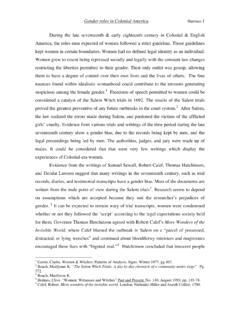Transcription of “Sex and Lots of Erotic Art to Prove It: The Erotic art of ...
1 1 Sex and Lots of Erotic Art to Prove It: The Erotic art of Pompeii By: Heath Wellman Senior Seminar: HST 499 Professor John L. Rector Western Oregon University May 28, 2003 Readers: Dr. Benedict Lowe Dr. Emily Plec Copyright Heath Wellman, 2003 2 The ancient Roman City of Pompeii is a spectacle of some of the worlds most beautiful and risqu forms of artwork ever found from ancient ruins. It is a city of beautiful villas, streets, bakeries, mansions, coliseums, bars and brothels. But the artwork of Pompeii is not like others found around the world. Rather the artwork from the city of Pompeii is very Erotic . The city of Pompeii holds many secrets regarding the ideas of Roman morality, the Erotic frescoes that line entire rooms with depictions of orgies, fellatio and cunnillingus sexual positions, and many other Erotic depictions.
2 Depictions in Peristyle Gardens (a colonnaded courtyard) show beautiful frescoes of Pygmies at a banquet being entertained by male and female pygmies having sex in front of the rest of the banquet. What does this depiction mean? Figure 1: Pygmy Erotic scene from House of the Physician (Clarke, 44) It seems amazing to think that depictions of such things would line the walls of houses of elite men and women while also being very visible in the public sectors of the town as 3 well. It seemed that sexual behavior was appropriate and open in Pompeii. But was it really? The questions of Roman morality and their obsessive love for Erotic art, and its uses in everyday Roman life is the question that I would like to answer in this paper. I would like to discover the purpose of this art, and why it was placed in both private and public sectors of the city?
3 Lastly, I would like to further understand the reasons why Roman society in Pompeii had such a fetish for Erotic art. By understanding these questions we can begin to understand the personalities and lifestyles of the Roman cit izens of Pompeii. How can depictions of male and females having sex at public bathhouses be allowed in the public eye of families, and children especially? Did they have any moral guilt of having such artwork in public and private places of the city? Could there be a possibility that in public areas of the city such depictions at bathhouses would be acted out for pleasure, entertainment, and fun? Where the painting s clues to the pleasures of the owner of the house? Could all this lovemaking have been really displayed all over the town in such ways, or are these depictions just the art of the Roman world and nothing more?
4 To answer these questions just discussed, I think that it is important to first to take a look at what different scholars have said about their own research regarding this topic. And then I would like to focus the later part of this paper on the social functions of Erotic art in both the private and public sectors of the city. By looking at the two areas of the city, we will begin to see the use of Erotic art, while also evaluating the differences between Erotic art and their functions in private and public life. 4 There have been many ideas in the archeological and historical community regarding the ideas about the social sex life of Romans in Pompeii. The research of many scholars has allowed us to better understand the life of these people. Because the city of Pompeii, Herculaneum and Stabiae were preserved by the ash so well, archeologists and social scientist have had the ability to investigate and try to understand this Erotic fetish of the Roman people.
5 One of the leading figures in this field would be Michael Grant, who has written several books on the city of Pompeii. One such book is Cities of Vesuvius. Grant describes the city of Pompeii as a haven of prostitution, brothels and bars. But surrounded by elite men and women with fantastic homes, slaves, and all the luxuries of ancient life. But Grant questions many of the ideals of Pompeii, mainly the brothels, prostitutes, and bars of graffiti and frescoes. Grant comes to the conclusion that such activities must have taken place, for the life represented in the graffiti and art of Pompeii, matches very similarly with the story of the Satyricon. Leaving Grant and other researchers to believe that Pompeii life may have been as Erotic as depicted in its paintings. John R. Clarke takes the studies of Grant farther by looking closely into the actions of the Erotic art of Pompeii, and deciphering their visual rhetoric as an image of art and love.
6 Clarke shows many examples of Frescoes, jewelry, furniture and other parts of material objects of Roman life that show the eroticism of this society. How depictions show rank in society, and status by lovemaking. What emerges, first and foremost, is that contrary to our expectations the Romans are not at all like us in their sexuality. 5 The acts that artists depicted are familiar to us, but the meaning that these representations had for the viewer are far from the ones we would like to superimpose on One of the major issues we have to investigate is the idea of Ro man moralit y and how it has played into this highly Erotic society. It seems that morals and religion must have played a factor in some way or another in Roman life, and Amy Richlin discusses this in her book; Pornography and Representation in Greece and Rome.
7 Richlin gives us an idea of the morals and also religious beliefs of the Roman system. Her conclusion is that there is a strong interrelation between lovemaking and life in the Roman art. Those morals of the time were much different than they are today. Richlin s work is a good way to understand the fundamental aspects of sexual concerns regarding morals in the Roman cities, especially Pompeii. We often times think of the act of love as something that is done in the privacy of our own homes. It seems very immoral to have public displays of sexual affection, especially in public places that are filled with people. But from the depictions that we can see in much of the Erotic art and graffiti around Pompeii, it seems that sexual acts of all kinds in the public were a very common and highly accepted part of the Roman life.
8 In the book Eroticism in Pompeii by Antonio Varone, he discusses one of these forms of public Erotic behavior that would take place in the theatre of Pompeii. It is important to recognize the sexual acts that occurred in the theatre because this will help us understand the openness of sexual promiscuity between citizens of Pompeii. It seems that often times sexual acts were very much apart of the plays, and that the actors would usually play there roles all the way to the end. The favorite place for such moments of lustful eroticism was the genre in which sexual allusion 1 Clarke, 3 6 played a substantial and conspicuous part. Sexual acts were often mimed on stage, and sometimes the players forged ahead and completed the did the crowd react to this kind of acting that was taking place?
9 It seems immoral to think that sexual acts could have begun in the crowd as well. It seems likely that sexual promiscuity may have played a role in what was occurring off stage just as much as on stage. Augustus, in his moralizing anxiety, sought to contain this phenomenon by having the women sit in separate sections of the keep their involvement from becoming a show within a show. 3So why was it that public sexual acts would erupt during the play? Were these sexual acts supposed to be apart of the play itself? Maybe this says something about the theatre. The theatre can be interpreted as places were the audience can live the story of the play. Be apart of the characters of the play and incorporate themselves in the action that is taking place. If we look back at what was earlier said by John Clarke, that sexual acts on the stage were most likely not used to arouse the crowd at the theatre, but rather was apart of the satirical and funny parts of the play.
10 The idea of mimes, actors and dancers in the act of sex and the truthfulness of their actions was looked at as more comical than sexual. If my conclusion is true, and the Erotic acts being displayed on the stage were only for laughs and entertainment and did not produce sexual acts in the crowd, then why would Augustus create laws to separate the men and women from the theatres? Could it be that upper elite s felt that such behavior demoralized the Roman people and made them seem uneducated and barbaric? 2 Varone, 49 3 Varone, 49 7 Otto Kiefer discusses this point in his book Sexual Life in Ancient Rome, which the actors of the play would end the play depending on the reactions of the crowd. Often times the crowd would seek sexual acts at the end, which was appreciated by the upper class, but because sexual acts would often seep into the crowd, this demoralized the art on stage, and this is what frustrated the upper class.
















